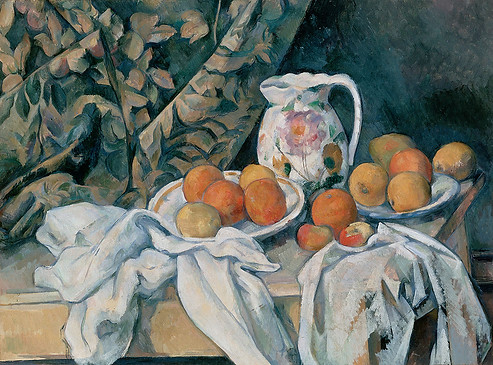
Symbols, colors and brushstrokes
EMERGENCE OF A NEW MOVEMENT
In the 1870s and 1880s, Impressionism dominated avant-garde art in France. Many up-and-coming artists, however, found fault in the Impressionists’ focus on style rather than subject matter. Aiming to shake up the contemporary art world, this group of stylistically dissimilar artists—including Paul Cézanne, Paul Gauguin, Vincent van Gogh, Georges Seurat, Henri Toulouse-Lautrec, and Henri Rousseau—formed the Post-Impressionists. Many of the artists listed often experimented in other styles connected to the Post-Impressionist painting. The beginning of Post-Impressionism is believed to be 1886 - the time of the last Impressionist exhibition and lasted until 1905 with the first Fauvist exhibition.



INFLUENCE ON MODERN ART
In 19th century Post-Impressionist artist founded and influenced a bunch of other movements - Georges Seurat became a founder of Neo-Impressionist group which later evolved into Pointilism and Divisionism, Les Nabis admired Cezanne's works, Gauguin experimented with Cloissonism, Synthetism and Symbolism. In 20th century Fauvists overtook the modern art scene, inspired by Post-Impressionists but revolutionizing their ides and giving rise to movements that led to developing of Expressionism and Cubism. Cubists referred to Cezanne as 'the father of us all'.
DEVIATION FROM IMPRESSIONISM
Like the Impressionists, the Post-Impressionists shared their work with the public through independent exhibitions across Paris. In 1910, noted art critic, historian, and curator Roger Fry coined the term “Post-Impressionism” with his show, Manet and the Post-Impressionists. Much like the Post-Impressionists themselves, Fry believed that the beauty of art is inherently rooted in perception. “Art is an expression and stimulus to the imaginative life rather than a copy of actual life,” Fry explains in An Essay in Aesthetics. “Art appreciates emotion in and for itself. The artist, is the most constantly observant of his surroundings and the least affected by their intrinsic aesthetic value. As he contemplates a particular field of vision the aesthetically chaotic and accidental conjunction of forms and colours begin to crystallize into a harmony.” Today, these ideas help us to understand the common thread between these artists.
